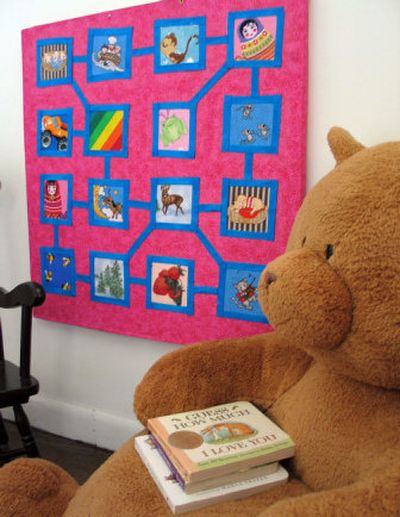Prepare to let creativity flow

I am a child of the ‘70s, an era when macrame plant holders ruled and even the boys made latch-hook rugs (I have proof). It seems like almost everyone I know born within a decade of me – 1974 – remembers a childhood heavy on crafts.
And many of us, including those with children of their own now, are finding ways to bring creativity back to our lives today.
On the Web, you can find a network of crafty people writing blogs about their adventures with fabric, yarn, paint and other mediums. Sites like the Angry Chicken and Wee Wonderfuls are inspirations to me.
This new column, The HomeMaker, is meant to bring a regular dose of craftiness to readers of Home. In this space, you’ll find how-to instructions for projects.
You’ll see ideas from crafters around our region. You’ll be introduced to books, magazines and Web sites to get our creative juices flowing. And hopefully you’ll be inspired to unplug the white crusty residue off the top of your glue bottle.
It’s time to get crafty.
A brief disclaimer before we begin. I’m not a seamstress. I’m not a painter. I’m not a carpenter. My attempts at knitting are quite wiggly. But I dabble in all of these areas, and when a project goes beyond my abilities, I’ll bring in the experts. Perhaps that expert will be you one day – I’m always open to hearing about what’s happening in your craft room.
Get ready
For The HomeMaker’s first installment, let’s focus on “quilting” for Type B personalities. Because I’m not a perfectionist, quilting in the traditional sense hasn’t worked out for me. I’m just not patient enough to be as precise as I need to be.
I still want the look of beautiful quilts in my home, though, so I’ve found a way to bring them into my life without the frustration. Inspired by the work of Bozeman artist Maggie Carlson, whose fabric and paper collages remind me of quilts, I began piecing together fabric in quilt patterns and adhering it to art canvases. You might not get to cozy up with these quilts, but they can be almost as lovely as that treasured heirloom Grandma made.
Get set
First, purchase a pre-stretched canvas, a wood block, or other art surface from an art-supply or craft store. In the photos here, I used wood blocks that I built after a quick trip to the lumber store.
Second, select a quilt pattern you’d like to follow or create your own. There are hundreds of books and Web sites on this topic.
For the green and blue quilt pictured here, I roughly followed a design by Denyse Schmidt (www.dsquilts.com), whose modern twist on quilting first turned me onto the craft a couple of years ago. Traditional quilters might be baffled by randomness of this “pattern,” but its quirkiness reminds me not to take crafting – or anything, for that matter – too seriously.
The pink quilt by the teddy bear, which hangs in a reading corner in my 2-year-old daughter’s bedroom, is an idea from “The Modern Quilt Workshop,” a book by Bill Kerr and Weeks Ringle. The pattern involves cutting out characters and objects from children’s themed fabrics, and it’s meant to guide imaginative storytelling. My daughter’s a bit too young to understand the concept yet, but the idea is to start with one picture, make up a story about the character in it, then follow a line to another picture, and continue a make-believe tale until we reach a dead end. This quilt definitely would be neat to make as an actual blanket, so the storytelling could occur while bundled up together, but the wall hanging works for us for now.
Go
Using pencil, lightly draw the quilt blocks on your canvas so you “stay within the lines,” so to speak, as you place down fabric. The size of your canvas will determine how many times you’ll be able to repeat your pattern.
Cut your fabric to match the desired pattern, laying each piece of material on your canvas as you go. Here’s the great part – instead of now stitching those pieces of fabric together with a sewing machine, simply brush the canvas with Mod Podge, or a similar adhesive, then lay the fabric back in its place on the canvas, working on small sections at a time so the glue doesn’t dry.
Repeat until the entire quilt is glued down.
Next, coat the quilt with a layer of decoupage medium, such as Mod Podge, to seal the fabric down.
Once the canvas dries completely, hang your artwork in your living room, above your bed, in a child’s room, or wherever a blank wall cries out for color.